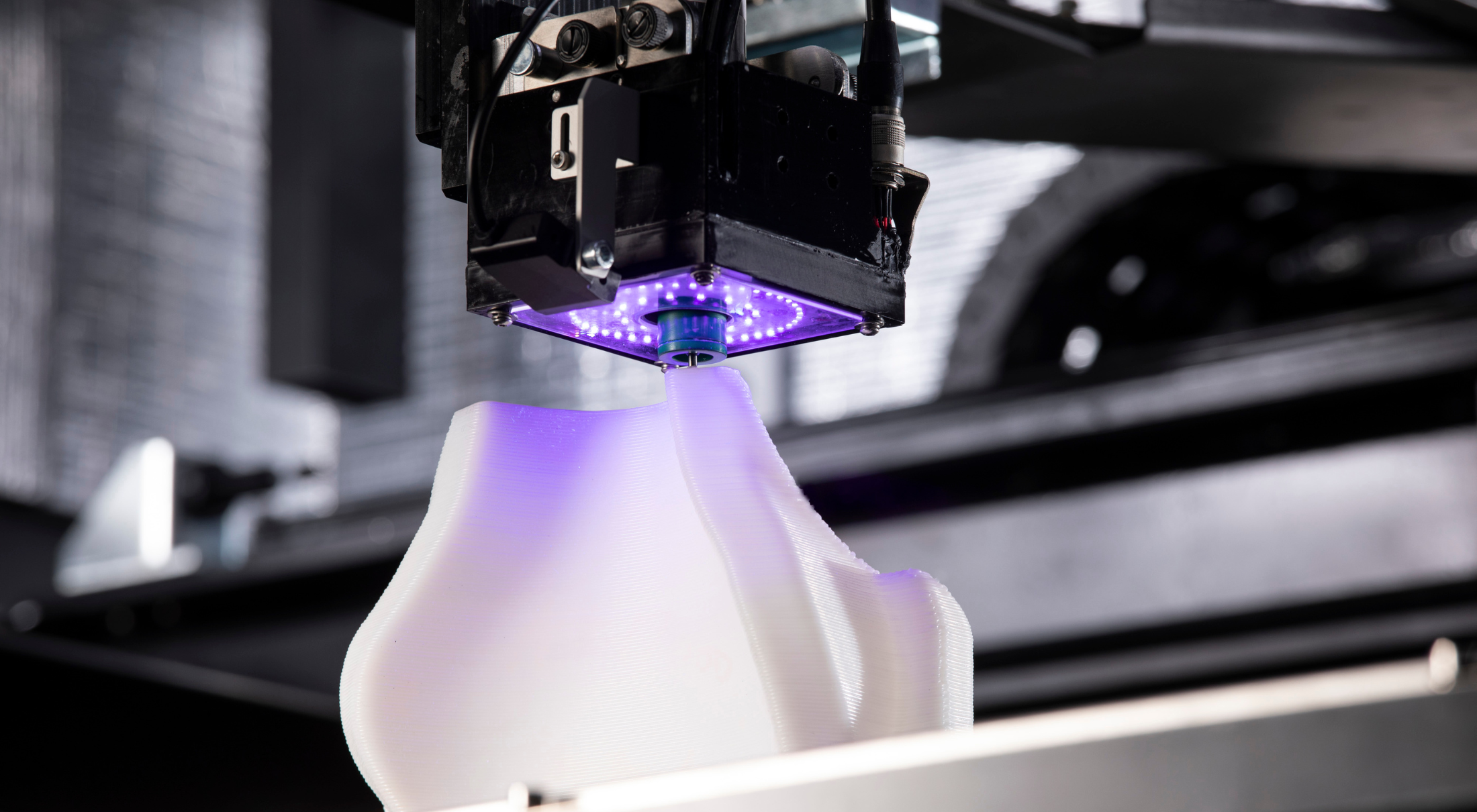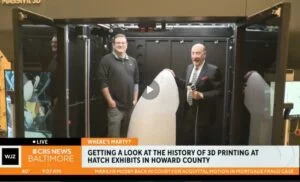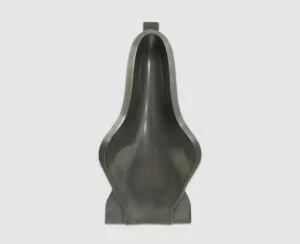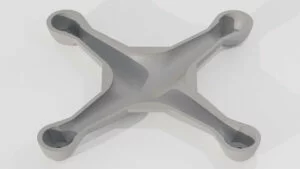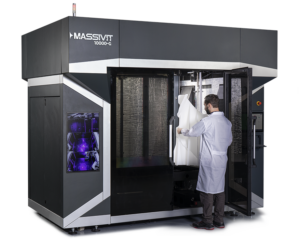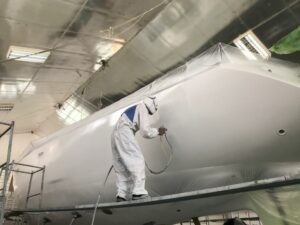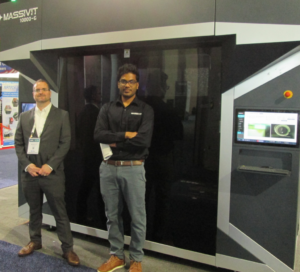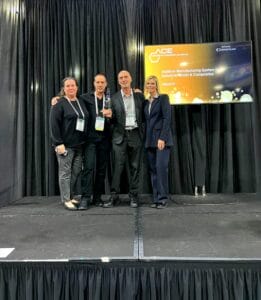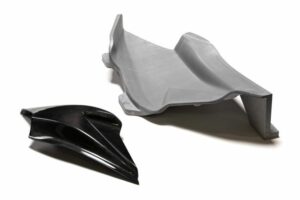
Casting dates back to the Bronze Age
With a technology that goes back so far, evolutions are expected, if not inherently necessary. However, while there have been significant advances in casting methods since ancient times, even modern processes leave a lot to be desired. Today large resin objects and molds for composite parts help produce so much of what we use. Despite this, creating a mold for composite objects remains time consuming and expensive.
Composite Molds Service an Enormous Market
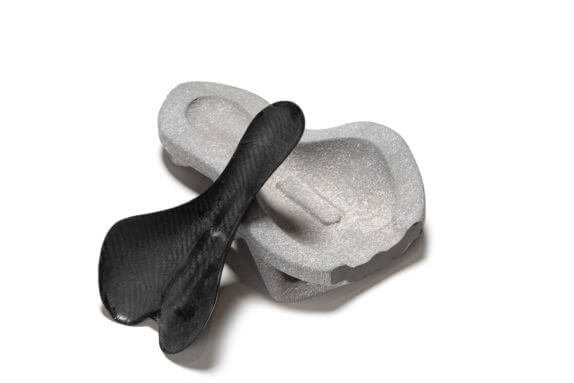
3D printed mold for carbon bicycle seat
In our world we can see composite parts everywhere we turn. If you need more proof, look no further than the projections for the global composites market which is set to reach $144.5 Billion by 2028. Somehow, the underpinnings of this enormous market are still dependent on investing inordinate amounts of time and money in creating the needed molds to create composite parts. This bottleneck in production of molds for composite parts, commonly called composites tooling, or sometimes composite molds, has not been addressed properly by workflows centered around traditional mold making methods.
How does that workflow look? By taking 19 steps to create the all-important composite mold:
- Plug Design
2. Raw Material Preparation
3. Raw Material Placement
4. Rough Machining
5. Fine Machining
6. Polish Tool Side
7. Apply Sealant
8. Apply Release Agent
9. Apply Gel Coat Layer
10. Layup Preparation
11. Resin & Fabric Layup
12. Apply Vacuum Bag
13. Cure
14. Release Vacuum Bag
15. Release Mold
16. Trim
17. Build Rib Support
18. Bond Mold & Ribs
19. Prepare Mold Surface
This incredibly lengthy process has many downsides. To start with, when we say “lengthy” we mean it’ll take weeks if not months. This could mean a long lead time for maintaining, expanding, or launching production lines. In addition, this 19-step journey is complex and heavily labor intensive. It requires a great deal of experience and manual precision, often leaving behind waste products too. Despite many efforts to break this bottleneck in the past, it maintained a hold of composite manufacturing – until the advent of Cast-in-Motion. This newest technology is shaking up the mammoth composites market and bringing it forward into the digital age.
Cast In Motion – a Generational Breakthrough
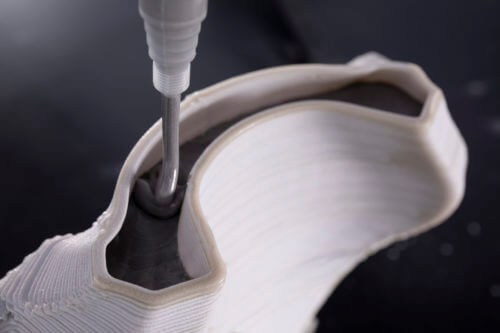
Cast-In-Motion technology enables directly printed molds
Since Massivit’s unveiling their proprietary Cast In Motion technology the industry has been abuzz. The ramifications for composites tooling were clear from the outset. Using CIM, composite mold manufacturers could save up to 90% of their manual labor costs while shortening their production time by 80%. The key lies in the innovative process by which additive manufacturing is coupled with unique resin casting technology.
Powered by Cast-in-Motion, the new Massivit 10000 uses two different heads that work together in harmony, all guided by the digital precision of the machine’s software. The printing head is focused on creating a “sacrificial” outer shell, while the casting head is responsible for the production mold itself. While groundbreaking, it is a rather straightforward process to understand. While the printing head leads the way, creating that outer shell by deploying an advanced formulation of rapid-curing, photopolymer material, the casting head follows closely behind filling the shell with high-performance casting material that enables true isotropy.

Water-breakable outer shell crumbles to reveal 3D printed mold
Thus, printing and casting the mold is done in one step. After curing the mold, it can now be removed from its shell, and here the process retains its simplicity due to the water-breakable properties of the “sacrificial” outer shell. This means the object can be placed in plain water and that outer shell will simply break away – leaving behind the composite mold itself. The mold is now ready and can be post-processed as needed.
That lengthy 19-step process is now down to just 4 steps:
- Printing the Mold
2. Oven Curing the Mold
3. Submerging the Mold in Water
4. Sanding & Polishing the Mold as Required
Direct casting of the mold eliminates the need of creating a master or plug, significantly simplifying and shortening the process of composite molds production. The additive manufacturing of the outer shell also enables exceptional geometry freedom for the most complex of designs. All of this adds up to a significant reduction in tooling costs, while reducing expensive material waste.
Composite Tooling in Days Instead of Weeks
The streamlined Cast In Motion process has an array of benefits, but what grabs the attention of composite mold manufacturers is the incredible speed.
In this new era of advanced digital 3D printers, composite tooling can be produced in days instead of weeks. This has the power to break the bottleneck of mold production for composite materials, causing a tidal wave of change in the enormous composite materials market.
With the Massivit 10000 rollout in 2022, composite tooling manufacturers are looking to Cast In Motion technology to change the way they’ve always done things. This generational step is an incredible evolution in casting, which itself is a technology that is over 5000 years old. Seminal changes don’t come around very often, but it is clear we are on the cusp of one that could change composites production forever. For technologists and businesses alike, it is an incredible time to be witnessing such a change.


